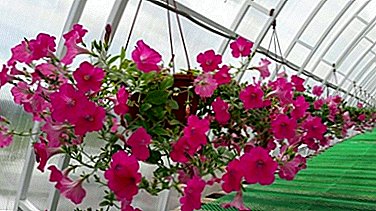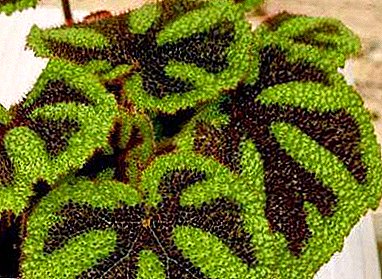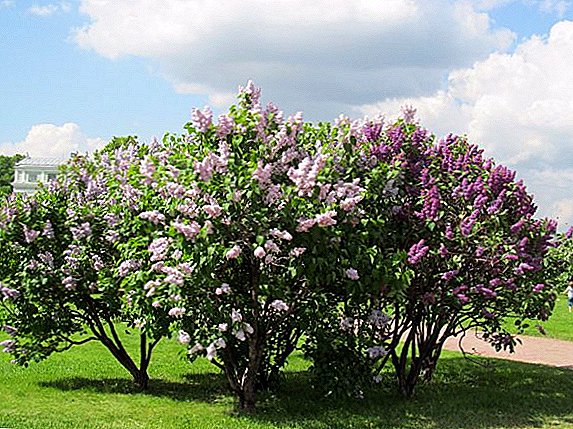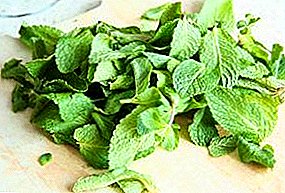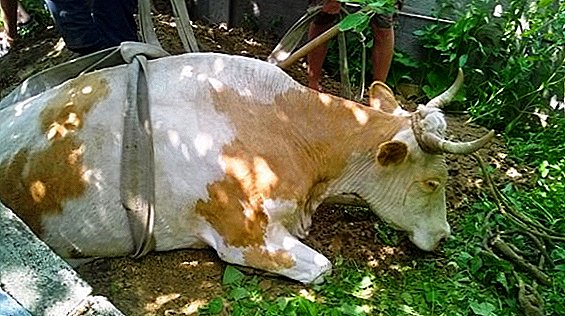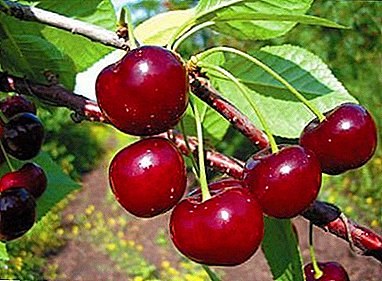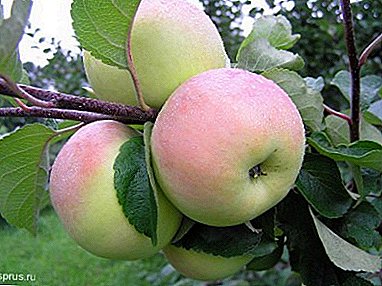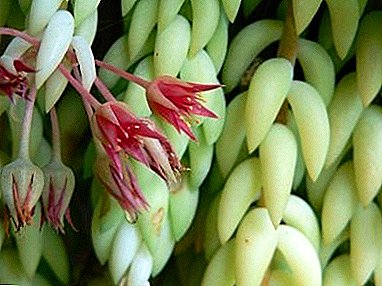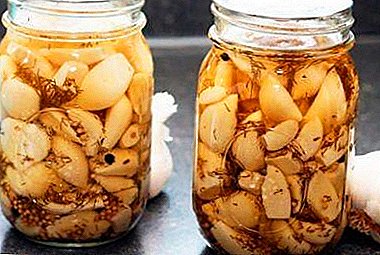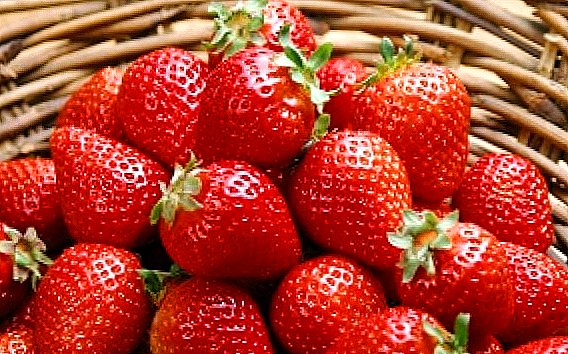
Preparing the soil for planting strawberries
Strawberries grow in one place for several years in a row. Soil preparation requires special attention, because the yield of berries depends on the preliminary correct preparation.
First you need to select a site. It should be a flat area, with good sunlight. Indeed, due to the lack of sufficient sunlight, there will be a bad harvest of strawberries. And one more drawback, in the shade there is often an excess of moisture, various fungal diseases develop on the leaves and roots.
Type of soil on the site can be any. However, strawberry bushes will not grow where there is sandy or clay soil. There are reasons for this. Sandy soils are less saturated with useful substances, and the roots of plants dry faster and overheat. Clay soil is dense, it does not pass air well, which saturates the roots with oxygen and suffers from excess moisture. Plants stop growing. To improve the quality of the land, it is necessary to apply fertilizer - humus, which allows the soil to become loose.
Should pay attention to the acidity of the soil. If the soil is acidic, then it is necessary to fertilize it: apply organic fertilizer, and for the ground, with a large amount of alkali, add fertilizer with mineral content.
When choosing a place for garden strawberries, you must also take into account the level of groundwater, is there any place where water can stagnate. To mitigate this factor, it is necessary to do drainage, but so that the earth was neither dry nor wet.
You should also remember that strawberries can not be planted twice in the same place. They do not recommend her transplant to where tomatoes, potatoes, cabbage had previously grown. It will feel more comfortable after onions, garlic, carrots, pumpkins, peas.
So, the next step is to prepare the land for seedlings. It is necessary to pry all weeds and other weeds that grow on your plantation. Especially you need to remove the thistle, reed, wheat grass (they take away all the useful substances from the earth and plants). To do this, dig the entire plot several times, and manually remove all weeds with roots. You can also place under the future strawberries, treat with a herbicide, for example, roundup, tornado. In two weeks the grass should perish.
Further we prepare the soil: we apply organic fertilizer (gypsum, lime). The site is being dug up and leveled as far as possible. After all, loose soil contributes to the rapid adaptation of seedlings to a new place, and their early growth.
An important step is the planning of planting strawberries. For example, single rows or double tapes.
To keep the row with strawberries straight, pegs are hammered at both ends and the rope is stretched.
Now you can start planting strawberry seedlings.
Strawberry planting rules
What are the landing methods?
Strawberry seedlings are planted in the ground in several ways. Gardeners use single row and double row.
The principle of single-row planting is that the distance between the ribbons is 60-70 cm, and the bushes of seedlings are planted from each other at approximately 15-20 cm. One-line planting is used when the bushes are planted in the ground in spring or autumn. Indeed, in the first year, garden strawberries practically do not bear fruit, but they produce mustaches that fill the free space in the rows.
Double-row planting is more efficient, it is great for summer, because as much as possible seedlings are planted on one piece of land, and you can eat berries almost the year they are planted. The distance between the ribbons is 70 cm, between the lines 30 cm, and the seedlings are planted 15-20 cm apart.
Another way that is used is planting seedlings in the beds. It is great for those areas where there is water. The location of the beds is from south to north, two rows of seedlings are planted along the edges, and in the middle of the path (approximately 30 cm in width) remain empty.
Many gardeners use compacted planting strawberry bushes. This is done in order to remove all the seedlings in the spring, which did not bloom in the first year. After sick bushes are pulled out, there will be a place for normal growth of other plants.
The main thing is to be on time
Strict terms for planting strawberries do not exist. It can be planted in spring and autumn, and in summer. But you need to take into account the nuances of a particular season.
Spring. At this time of the year, seedlings are recommended to be planted as early as possible, with the start of work in the field, in early April. The main thing is not to miss this moment. If strawberry bushes are planted later than the allotted time, in May, then the pace of their development will be slow. Time to landing can not be. In spring, seedlings are planted immediately in the open ground.
Summer. With the right approach to planting strawberries, it will be possible to pick berries in a year. It is better to plant it after rain or in cloudy weather, so it will be easier for her to start. Additional watering is recommended, then it is necessary to mulch the soil, i.e. loosen it in order to avoid the appearance of a crust on the surface.
Autumn is the most positive time of year for planting seedlings. This is best done from August 20 to September 15, but the timing is conditional, it all depends on the climate of the region in which the landing is planned. But it is desirable to have time before the start of the first frost.
Regardless of the season, before planting strawberries, it is necessary to prepare the seedlings: process the root system from various insects (using a solution of blue vitriol). Directly, before planting the bushes, the roots straighten. They sit in an upright position, long - obviously cut off.
It is also interesting to read about the care and planting of black currant
What way to grow?

Usually, strawberries are grown in two ways: in greenhouses and on open ground. Both methods have their advantages and disadvantages.
Before planting seedlings in the open land, for a start, it must be prepared. The soil is loosened and compacted for access of oxygen. Then you need watering, and only after that, landing.
Strawberries, planted in greenhouses, under the film, are sown earlier than those that grow on the ground. This method is suitable for early variety. Film tunnels are collected in April. They need to be aired, loosened the soil, watered with warm water. Be sure to need a thermometer to control the temperature. At temperatures above 25 ° C, the film is removed per day. In the autumn strawberries are covered with straw or leaves from trees. Fertilizer is applied: peat or compost.
In addition, strawberries are still growing in vertical rows. This method resembles steps, tiers. It is great for small areas. Special containers resembling a pyramid, put at a distance of 10 cm from each other. For their filling use peat mixture, humus, sod land. At frosts, the container are removed and covered with agrofibre, leaves, peat. When frost, strawberries are covered with snow.
When growing strawberries under agrofibre, you can harvest earlier in a few weeks. Agrofibre keeps temperature, protects from wind and frosts.
Also, strawberries are also grown in plastic bags. Pre-prepared soil is poured into the bag, and seedlings are planted in the holes. Then they are tied to the ceiling.
Caring for strawberries properly
Watering strawberries
Watering strawberries directly depends on what the weather dictates to us. The frequency of irrigation is determined by the dryness of the soil. The best time for watering is early morning. The leaves are dry in the evening. There are no flowers yet, the plants are watered. Watering resembles a small rain, with its help dust is washed off the leaves.
In the heat, strawberries are recommended to be watered once every seven days, water is poured in an amount of from 10 to 25 liters per square meter. With the appearance of the fruit, the frequency of watering is reduced. Water used for irrigation is warm, the temperature is approximately 20 degrees. Watering with cold water can affect the growth of seedlings.
When the first flowers appear, water is poured on the ground, avoiding contact with the bushes. Water does not pour on the berries, as they may start to rot.
We destroy weeds

Weed control still needs to start before planting seedlings. But there is a weed that continues to clog the plants, taking moisture, nutrients. We must constantly weed both during the entire period of the ripening of the crop, and after it. This should be done at a time of 8. The depth of loosening is about 10 cm. It is better to get the root system of weeds from the ground and throw them out.
In large areas planted with strawberries, herbicides are used to get rid of grass and weeds. They are recommended to spray them 14 days before the intended landing.
Another way to fight is planting buckwheat, it makes the land more fertile and helps to get rid of weeds. Then they sow something of winter crops, and only next year they plant strawberries.
Fighting pests
Strawberries do not have much pests, but they require immediate treatment. Treated plants before the appearance of flowers or after picking berries.
The main pests include:
- Tick transparent. Leaves are striking, they become yellow, and the berries themselves are small. Processed karbofosom after harvest.
- Nematodes. They live in leaves, they completely hit the plant: the leaves become darker in color, the strawberries do not grow. Infected bushes pull out.
- Another pest include strawberry beetle, weevil, whitefly. Get rid of them with karbofos, aktar.
- Snails and slugs. They have a detrimental effect on the berries.
- To avoid the ants, sprinkle the soil with soda.
Pest control needs to start in the fall, with the treatment and disinfection of the soil. A great way is to mulch a film of earth, getting rid of all weeds. It is necessary to timely remove the dry leaves, monitor the soil moisture.
Diseases of strawberries and its treatment
The main diseases of strawberry are:
- Gray rot. Brown spots with a gray bloom completely affect the leaves, buds, fruits. The treatment is: picking berries on time, eliminating weeds, completely destroying diseased plants. Sprayed by the Azocene.
- When late blight wilting slows growth, gray leaves appear, seedlings may die. To fight you need to moisten the soil, and when the first signs appear, immediately remove the strawberries.
- Mealy dew spreads through the air. The seedling is covered with gray bloom, and mold appears on the berries. To get rid of the powdery mildew, it is necessary, before the flowers appear, to spray with soda ash.
- Brown spot affects leafy plates, manifested in the form of brown spots on the top of the leaf.
Getting ready for winter
To prepare garden strawberries for the winter period you need:

- Hilling and mulching is the first thing to do. Weeding strawberries in the fall is not recommended, as you can damage the roots, and they will not have time to recover before frost. For the same reason, it is not advised to remove the grass, but rather leave it until spring.
- Cover the strawberries tightly for the winter in several layers. You can use plant materials: leaves, straw, dry raspberry branches, then, when the snow falls, put a layer of snow. With artificial materials, agrofibre or agrotex is ideal. They maintain optimum humidity and temperature.
- Strawberries should be prepared for wintering long before the first frosts begin.


